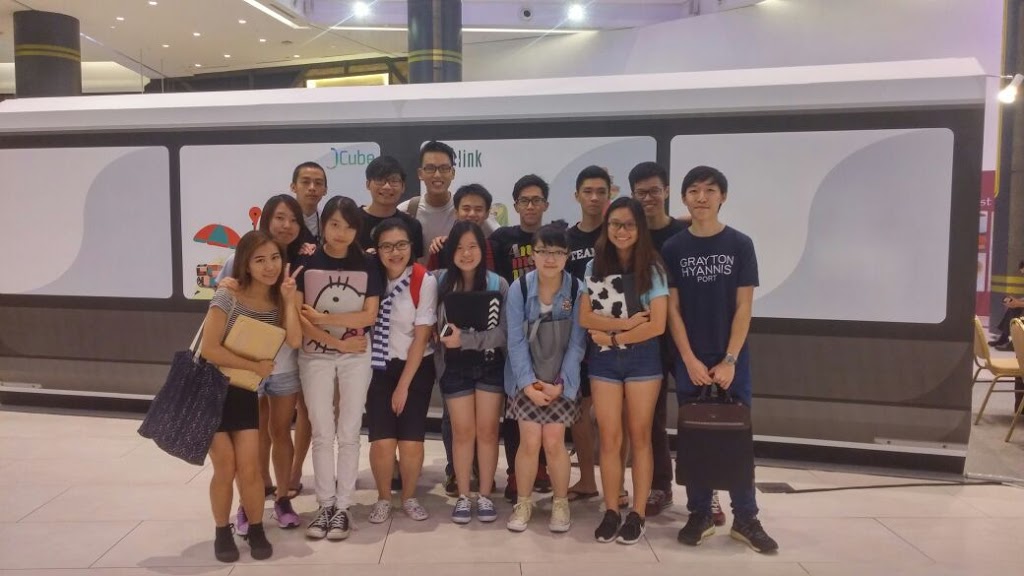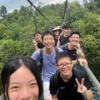To: Dr xxxx,
Can you even imagine the shock I felt on the night of 18th April, when I saw my grade for my epithelial case study assignment? 37/100. That was what you had given me. I could not believe it. In my entire Biomedical Science education journey, I was never given such a low grade before. Never.
You may think you are doing the right thing. Sure, my plagiarism percentage was high, but I’m sure that based on the numbers alone cannot prove anything. A high Turnitin rate does not equate to plagiarism.
What you did was that you tried to destroy my future. Sure, I sound extremely dramatic here. It is just a bad grade. But that bad grade is going onto my transcript. I will have to explain that bad grade over and over again in future. I will have to defend that one bad grade that I don’t deserve. And you tried to bring my module average down. You made me took my finals knowing that no matter how well I do, there was no chance of me scoring an A in the module. Even though my other assignment was an A3.
Qian,
I am sure you are likely rather surprised and shocked at your mark for this section. Re-phrasing copied sentences in the way that you have done here is in fact a form of plagiarism. You may not have been aware of this but you have stepped across the university’s “policy on plagiarism and cheating.” I am afraid that I can’t mark the sections of text which have been highlighted and you will see that there is not much left to speak of.
Rather surprised and shocked is an understatement. Anger, hatred and boiling mad would be a better description of what I felt after the initial disbelief washed off. I’ve spent weeks reading up on a disease that I am personally interested in, only to be accused of plagiarism. Scroll to the last photo of this post that I made way before I submitted the assignment.
See, if I really wanted to plagiarize, I would have chosen to do cystic fibrosis with both of my friends. I went with what I am personally interested in studying and paid a heavy price for it. Wouldn’t copying off my friends be way easier than copying off research papers? Yet I chose to work solo because I have confidence in my own work. I take pride in the essays I submitted.
I’ve spent hours in the library and in my room crafting the 300 words essay that you wanted. I rewrote the paragraphs countlessly hoping to get a good grade. I was so excited about this assignment. Ask my friends, and they’ll tell you I’ve been talking about the assignment for a long time.
“In other words, plagiarism is an act of fraud. It involves both stealing someone else’s work and lying about it afterward.” – plagiarism.org
I did not steal anyone’s work. I did not lie about not stealing anyone’s work. Any educated student would be able to tell you that there was no way I could have ‘discovered’ the molecular pathway for the disease. Even if I had not cited, it was obvious that I am not the one who ‘discovered’ it, I am simply summarising the work of other scientists that studied on dystrophic epidermolysis bullosa. In addition, I did my citations properly. I had not tried to steal anyone’s work.
Because you gave me a bad grade less than a week before finals, I had to use the precious time that could have been used to revise my work to look for help regarding my grade. Of course, after fighting for 3 weeks, I’ve concluded that my University is on your side and opines that I had plagiarized. I had no intention of fighting the University anymore. Instead, I will defend myself once and for all. I’m tired of contacting so many people from the school that I even lost count. I’m tired of repeating the story over and over again. So here, I will show that I did not plagiarized (see below).
Even if everyone said I had plagiarized, my conscience is clear, and I do not have to swallow the accusation. I’m the student who puts in effort in all my assignments. I am the student who spent more time studying than socializing. I am the student who does assignments instead of going to clubs and get drunk on alcohol. I am a decent student, and I do not deserve to be accused like this.
I would like to add that I recognise you as one of our stronger students… -Dr xxxx
I know I am not a top student. Heck, I might be just one of the average. It doesn’t bother me. What bothers me is that I failed an assignment because I was accused. What bothers me is that there is no one in the school that would stand on my side.
When I went to search on ‘how to defend yourself against plagiarism accusation’, I realised that I am not the only one who had to go through this. Many students all around the world are also being accused of plagiarism despite being innocent. Students like us are at the mercy of our professors. However, we do not have to be silent about it. Speak up and defend yourself. We have no obligation to swallow the accusation like a bitter pill. This is my life, my education, and my grade. I have every rights to protect it. And since you would not give me the grade that I deserved, I shall show the world that I do not deserve the grade you gave me.
This essay was inspired by this article that I read while searching on how to defend myself against plagiarism, thus it would probably be very similar in style.
I’ve written my defence on the next page of this article for anyone who is interested.
My essay:
Dystrophic epidermolysis bullosa (DEB) is an inherited disease. It has two patterns of inheritance, autosomal dominant and autosomal recessive. It is a result of the mutation of COL7A1 gene that encodes for type VII collagen1. Anchoring fibrils are mainly composed of type VII collagen and it provides stability for the dermal-epidermal adhesion2. Anchoring fibrils are altered morphologically, reduced in quantity or absent in patients with varying forms of DEB3.
For healthy individual, epidermal keratinocytes and dermal fibroblasts synthesize the type VII collagen. First, procollagen α1 (VII) chain is synthesized, followed by formation of a trimer which has its collagenous portion tucks into its triple-helical formation. After the triple-helical molecules are secreted to extracellular space, 2 type VII collagen molecules form anti-parallel dimer. It then undergoes a proteolytic removal of a part of the NC-2 domain. The dimer is stabilized by disulfide bonds. Finally, many dimer molecules would assemble side-by-side to form the anchoring fibrils2,3.
The 3 major types of mutations in type VII collagen protein synthesis are premature termination codon mutation (PTC), missense mutations and glycine substitution.
PTC mutations that arise from mutation of COL7A1 gene will result in the formation of truncated polypeptides which are non-functional and cannot assemble into anchoring fibril. This leads to Hallopeau-Siemens variant of recessive dystrophic epidermolysis bullosa (HS-RDEB)1.
Missense mutations could modify the trimer formation and the stabilization of dimers. The loss in stability by disulphide bonds and change of function of type VII collagen due to the mutation causes a milder variant of RDEB knowns as RDEB-nHS1.
Glycine substitution occurs mostly in the triple-helical formation. It modifies the folding of the protein and secretion of collagen. Most mutations found near exon 73 in the triple helix of COL7A1 are the cause of dominant DEB, while mutation in other areas has lesser dominant interference1.
References
- Dang Ningning, Murrell Dédée F. Mutation analysis and characterization of COL7A1 mutations in dystrophic epidermolysis bullosa. Experimental Dermatology. 2008 Jun 3;17(7):553–68.
- Shinkuma S. Dystrophic epidermolysis bullosa: a review. Clin Cosmet Investig Dermatol. 2015 May 26;8:275–84.
- Chung HJ, Uitto J. Type VII Collagen: The Anchoring Fibril Protein at Fault in Dystrophic Epidermolysis Bullosa. Dermatol Clin. 2010 Jan;28(1):93–105.








Stay strong!